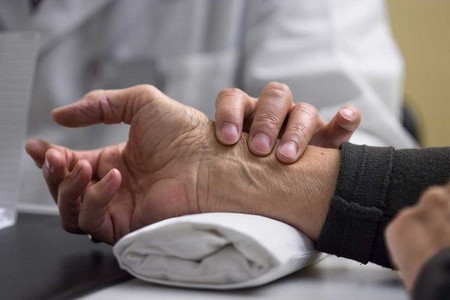Each time the heart beats it pumps blood into the circulation, and a wave courses along the walls of the arteries. This wave is the pulse, which can be felt in the body at any point where a large artery crosses a bone just underneath the skin.
In a young baby the normal pulse rate goes up to 140 beats a minute, but during childhood the rate gradually falls. In the normal adult the rate is 60 to 80 beats a minute. There are many reasons for a rise in pulse rate: emotion, exercise, infection, shock, haemorrhage and heart disease are some of the most common. A fall in the pulse rate is more rare, but might be found in hypothermia.
As well as noting the rate, you should record the strength of the pulse – whether feeble, bounding or normal. Rhythm is also important: a normal pulse beats regularly.
It is important that you use your fingertips and not your thumb to take a pulse; your thumb has its own pulse, and you risk counting that by mistake. It is essential to use a watch or clock with a second hand for accurate counting. Practise on yourself and your friends until you feel confident to take a pulse accurately.
Taking the patient’s pulse
The easiest and most convenient place to feel the pulse is at the wrist, just above the crease on the thumb side. Sit the patient down. Place your fingertips over the pulse and support the patient’s wrist w your thumb. Count the beats for one minute. Record.
Counting the respiratory rate
Each respiration consists of breathing in and breathing out, so the complete rise and fall of the chest is one respiration. The normal adult breathes 16 to 18 times a minute, but a higher rate is seen in many conditions: emotion, exercise, haemorrhage and diseases of the heart and lung are among the most common causes of an increased respiratory rate.
The rate at which a person breathes can be altered at will: anyone can breathe more quickly or slowly if he wants to. Once the patient knows you are counting it becomes extremely difficult for him not to alter his respiratory rate. There is, therefore, no point in you recording it unless there is some definite information to be gained, for instance about a respiratory infection.
To count the rate accurately, the patient must be unaware of what you are doing. The best time is when he is asleep; otherwise count the rate when you are at the bedside doing something else, for example taking the pulse.
